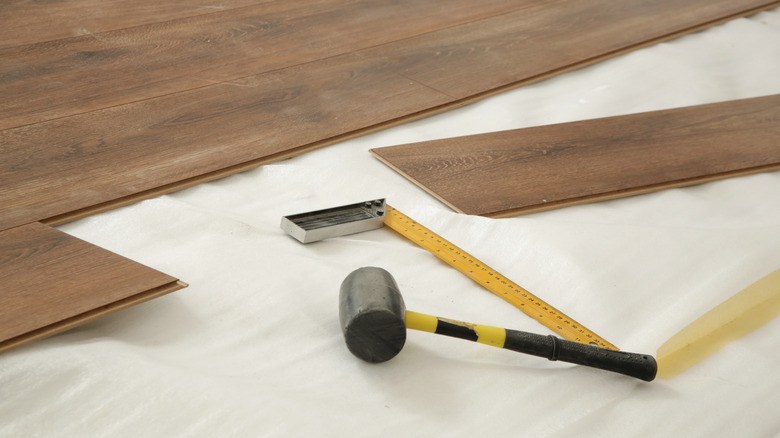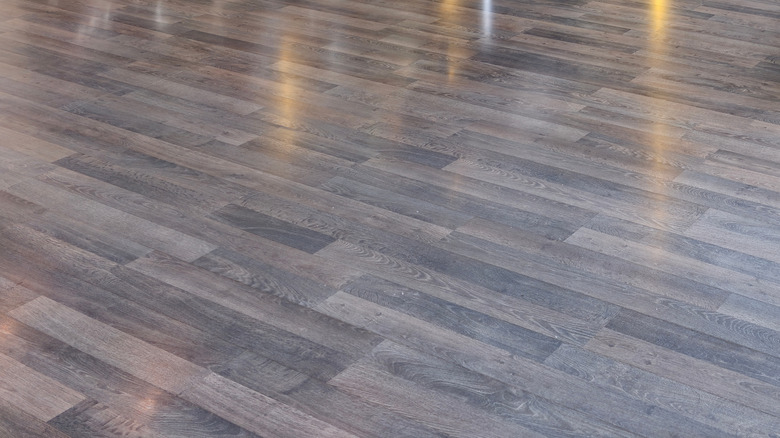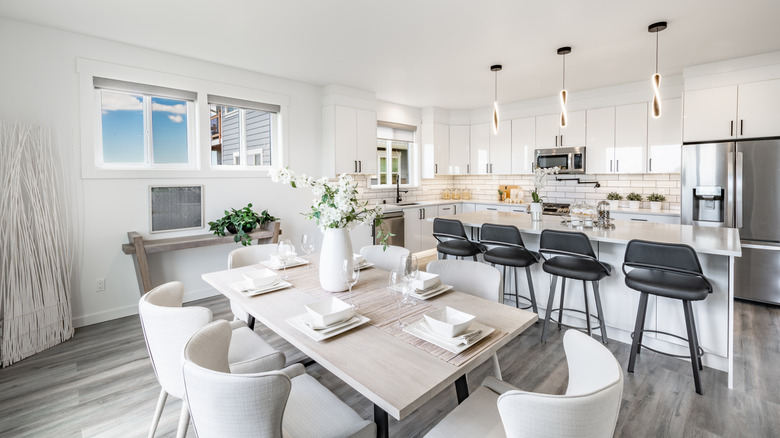The Type Of Vinyl Flooring That Instantly Outdates Your Space
When you want to renovate or refresh your home, the goal is to make it look current, not to accidentally trap it in an outdated design style that's already over. If you're planning a flooring project soon, be aware that one material choice immediately throws your space into the last decade: greige vinyl plank flooring. This flooring was everywhere for nearly ten years, with flippers and homeowners thinking it was the perfect solution for each room. It promised the neutrality of gray mixed with the slight warmth of beige.
The problem is that its popularity, and subsequent overuse in rental units and quick-fix renovation, turned it from a stylish flooring choice into a shortcut that now reads as dated. Trends always move quickly, especially when a certain look becomes cheap or common. While vinyl plank flooring remains convenient, the greige color itself has become a relic of the 2010s.
The physical flaws of yesterday's planks
Aside from the color, the construction of the older planks often reveals their age. When thinking of outdated flooring trends, we need to look at the physical characteristics that scream "budget renovation" from a few years ago. One giveaway is the plank width. Many older vinyl products used pieces that were narrow, which resulted in a busy appearance across the entire floor. Current design trends lean toward wider planks, often measuring 6 inches or more, for a cleaner, more open look.
Another sign is the surface finish and texture. Earlier generations of vinyl plank often had a high-gloss finish. While shiny floors might seem like a good idea, they highlight every footprint, scratch, and piece of dust, making them frustrating to maintain. The high-gloss surface also looks artificial. The current trend favors matte or low-sheen finishes, which mimic the look of real wood flooring and hide scratches and dirt better. Avoid any vinyl with obvious faux textures, such as overly distressed or machine-scraped patterns. Instead, look for updated options that use Embossed-in-Register (EIR) techniques, where the surface texture matches the printed grain, which looks more realistic.
Why greige fell out of favor
Greige's biggest drawback is its cool undertone. For years, gray floors were a popular trend because of their sleek and contemporary look, but the pendulum has swung towards materials that are warmer and more comforting. Today, these cooler-toned greige floors can feel sterile, flat, and uninviting, especially in homes that have lots of natural light or warm-toned furniture or paint.
The current market is strongly leaning towards alternative materials to gray floors that feel earthy, such as natural oak, and honey- or caramel-colored woods. Greige struggles to work with this shift because its cool neutrality often conflicts with rich, warm shades. This color mismatch makes choosing future decor more difficult and limits how a space can incorporate new trends over time. Since so many quick, low-budget flips use the greige floor look often, it now often comes across as uninspired and basic. Homeowners seeking character and personalization should steer clear of greige vinyl plank flooring.


